Yates Account
Join now
Create a Yates account today!
Sign up to join the Yates Garden Club for monthly e-mails packed with seasonal inspiration, tips for success & exclusive promotions.
Plus if you’re a Garden Club member you can take part in the Yates Growing Community - a blog to share successes, get advice & win prizes in fun challenges along the way!

Forgot password
Enter the email address associated with your account, and we'll email you a new password.
A gardeners biggest concern is usually the pests that attack their plants, but autumn’s the season when some outdoor pests start to feel the cold, and invite themselves inside. Here are our quick tips to deal with unwelcome visitors!

Rats and Mice
Rats and mice are very disruptive autumn gatecrashers. As the weather gets colder, they're driven to look for food and shelter; they’re after cosy places where they can make nests and ride out the winter. And, while rodents can cause physical damage in a house by gnawing on walls and wiring, most of the destruction they cause comes when they get into stored food. Contact from rodents contaminates food and results in a lot of wastage.
Rodents carry parasites, like fleas, and infectious diseases like leptospirosis, both of which can be transmitted to people or pets. Transmission of leptospirosis bacteria can be caused by contact with rodent saliva, faeces or urine.
Our range of rodent controls includes solutions for most situations, in the form of easy-to-use traps, baits and bait stations.

Fleas
Adult female fleas need a feed of blood before they can lay their eggs, which is why they’re always busy making life a scratching misery for pets and other hosts. Adult fleas on pets can be treated with suitable registered controls, but their offspring can remain dormant in carpets, pet bedding or soil for months, while they pupate. If conditions are warm enough, fleas can be triggered into hatching out by vibrations and movement. When they sense a host is passing by, these new fleas can leap up and dive into pet fur, or clothing.
For this reason, if you have a flea infestation in the house it's important to treat carpets and rugs, but also to treat the outdoor areas where your pets spend lots of time. For these outdoor areas, Yates Ant, Flea & Tick Killer is a great control for dormant fleas. This easy granular product creates a rain resistant, flea-killing layer in the soil or leaf litter.
Indoors, Yates Blitzem Barrier Spray forms a residual barrier that kills fleas on contact, for up to 3 months. Apply it to floors, carpets, skirting boards and underneath furniture. It also controls a number of other annoying household insect pests, including cockroaches, spiders, ants, carpet beetles, silverfish and clothes moths.

Ants
The usual guilty party when ants invade the house is the White-Footed Ant (Technomyrmex jocosus). This introduced Australian species makes nests up off the ground, either outside or indoors (in rotting wood, under the bark of trees or in building wall cavities, inside light switches and the like). You'll usually encounter them as long, single-file lines of scurrying black ants on the walls of your house, as they forage for food or water. Unfortunately, houses are a great source of both, so white-footed ants aren't slow to take advantage! They prefer a sweet diet, but they're also delighted to scavenge dead insects or kitchen scraps as a source of protein.
White-footed ants form very large colonies, made up of connected nests that can contain many thousands of ants. This adds to the difficulty of controlling them, because unlike most ant species, worker ants don't share the food they forage with other ants back at the nest. Instead, they eat the food, digest it, then lay infertile eggs for the other ants to eat. Because ant baits aren't dispersed throughout the nest by white-footed ants, most baits don't work very well on them.
White-footed ants are known to 'farm' sucking insect pests (like scale or aphids), by protecting the pests from predators. This is why you'll often see trails of ants in citrus trees: they are harvesting sweet honeydew excreted by their insect herd.
An excellent method to help control these ants is to remove easy access to food. For example, if you control sap-sucking insect pests in your garden, it denies the ants a source of honeydew. Make sure food in your cupboards is well sealed in airtight containers, keep kitchen benches and pet food bowls clean, and so on.
To prevent white-footed ants entering your home, use Yates Blitzem Barrier Spray to form a residual barrier that kills ants on contact, for up to 3 months. You can use it to spray into cracks and crevices where ants are active, or onto ant trails on wall surfaces, inside cupboards, or underneath appliances. It also controls a number of other household insect pests, including cockroaches, spiders, fleas, carpet beetles, silverfish and clothes moths.
Yates Ant & Wasp Dust also kills ants on contact. It comes in a convenient 'puffer' bottle that allows you to accurately blow dust into ant nest entrances, or into cracks and crevices where you can see ant trails.
In outdoor areas, sprinkle Yates Ant, Flea & Tick Killer onto ant trails along the base of walls, in between pavers, on paths or lawns, or directly on and around ant nests. It comes in a convenient shaker pack; its sand-like consistency makes it a breeze to apply.

Wasps
Wasps are everyone's pet hate! But their impact on NZ is goes much deeper than disrupting your BBQ - here's why it's a great idea to keep them under control, especially if you spot them during autumn.
Unfortunately, in the warmer parts of NZ wasp nests can survive through the winter and get a head start in spring. This can result in extremely large nests getting permanently established. Introduced wasps are known to kill and eat an enormous volume of insects every year, so they've evolved into a serious threat to native ecosystems wherever they have established themselves. Wasps aren't just a problem for their prey insects; they hog the insects and honeydew that native birds, skinks and geckos need to survive.
Wasps have been actively expanding their nests over summer, so by early autumn their population is peaking. During March, introduced pest wasps switch over from a high-carb diet of honeydew, to a protein diet made up of insects and dead animals. This change of diet allows wasp nests to produce juvenile queens, that fly away to hibernate (by themselves) through the winter. During cold years, the nest usually dies off in late autumn. The exiled queens wake up in spring and begin the arduous task of building a new nest for themselves. However, in the nests that manage to survive winter, new queens simply take over the facilities and continue with business as usual!
The four introduced wasp species in New Zealand are very different to our solitary native hunting wasps...these introduced species are social wasps that build 'honeycomb' nests out of chewed wood or plant pulp. Nests can be placed up high, or in underground cavities. All these introduced wasp species have a painful sting, which can be fatal for vulnerable people with allergies.
German Wasps (Vespula germanica) and Common Wasps (Vespula vulgaris) are the nastiest wasp pests and can be quite dangerous when their numbers get high. These are both underground nesting species. Yates Ant & Wasp Dust is an easy solution to kill off their nests; it comes in a convenient 'puffer' bottle that allows you to accurately blow dust into the nest entrance hole. It's best to use it at night, while wasps are tucked up inside their nest.
Alternatively, an aerosol can of Yates Wasp Killer & Nest Destroyer can target wasps from a comfortable distance, so you don't need to get too close to a nest. You can shoot a stream of spray at nests that are up high, or in the ground (aim the spray into the entrance hole).
Chinese Paper Wasps (Polistes chinensis) and Australian Paper Wasps (Polistes humilis humilis) aren't as troublesome as the Vespula wasps above, but they're just as annoying around your house and outdoor areas! Paper wasps hang their small nests from branches or buildings (they prefer nesting under overhangs or eaves).
Pro Tip: if you find an underground nest with an unusually large number of wasps entering and exiting, make certain to put on protective clothing before approaching it - the nest might be bigger than it looks! We recommend a beekeepers net veil, with thick gloves and overalls. It's a good idea to seal gaps at wrists and ankles with adhesive tape.
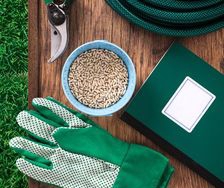
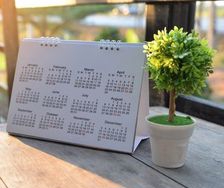
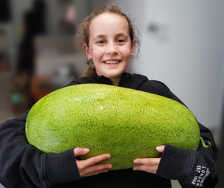
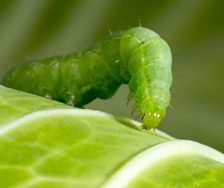
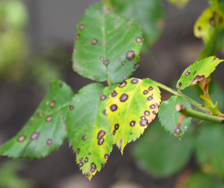
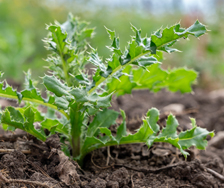
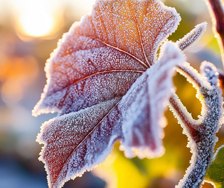












Share
Share this article on social media